Judaism is the original member of the Abrahamic faiths, which include Christianity (Catholicism, Protestantism, and others), Islam (Sunni, Shiite, and others), and other minority religions. As a long-standing religion with thousands of years of history, Judaism has many traditional holidays. Many of these events occur in the month of September.
Rosh Hashanah

Rosh Hashanah is commonly known as the Jewish New Year1. It is traditionally considered the anniversary of the day that Adam and Eve — the first two humans — were divinely created. (See the 7 days of creation for more information.) As the start of the High Holidays, Rosh Hashanah is a 2-day holiday. This year, it begins at sunset on September 25th and ends at sunset on September 27th. (Traditionally, Jewish days begin and end at sunset.) During this holiday, people should refrain from creative work (see Yom Tov for details) and should try something new and/or wear new clothes.
Preparations for the new year often begin as much as one month in advance: the month of Elul, according to the Hebrew calendar. People will say “selichot” (セリホト), prayers of penitence, as the High Holy Days approach. For “Teshuvah” (テシュヴァ), they make lists of their wrongs and apologize to friends, family, and colleagues for any bad incidents that took place between them during the past year. (“Teshuvah” basically means “Repentance.”) These prayers are also early preparation for Yom Kippur2. Jewish people will prepare foods in advance of the holidays so that they are not cooking on sacred days. It is also customary to send cards and/or family photos to friends and family at this time.
Specific greetings are an important custom of Rosh Hashanah.
Before Rosh Hashanah, you can use the following greeting: “Ketivah v’chatima tovah.” (ケチヴァ・ヴハチマ・トヴァ) It basically means “A good inscription and sealing [in the Book of Life].”
Afterwards, there are 2 kinds of greetings to use on the first night of this holiday:
· “Leshana tovah tikatev v’tichatem”(レシャナ・トヴァ・チカテヴ・ヴチはテム)– This greeting is used for males.
· “Leshana tovah tikatevee v’tichatemee”(レシャナ・トヴァ・チカテヴェー・ヴチはテメー) – This greeting is used for females.
Both greetings translate to something along the lines of “May you be inscribed and sealed for a good year.” Overall, these greetings enhance the feeling of belonging to one’s community.
Starting on the first noon of Rosh Hashanah, you can use this greeting: “G’mar chatimah tovah.” (グマル・ハチマー・トヴァ)That roughly translates to “A good final sealing.” It’s customary to use this greeting until Yom Kippur, since that’s when your fate for the new year is supposed to be sealed.
Food traditions are also important.
On the first afternoon of Rosh Hashanah, some Jewish people will throw bread crumbs into the river or ocean (moving water) to symbolize “casting away sins”. This tradition is called “Tashlich” (タシュリク). Also on the first evening, many people eat honey and apples, and there is a traditional Hebrew blessing over the specially round challah (ハーラ, a sweet bread) and wine3. The bread blessing is called HaMotzi (ハモヅィ) and the wine blessing is called kiddush (キヅシュ). Candles are lit at each sunset by the women and girls of the house.
To make wishes for the coming year, Jewish people may eat the head of a fish or a ram, new fruits such as pomegranate, or other traditional foods. In general, the goal is to eat sweet foods and avoid bitter foods so that the new year is sweet and not bitter.
There are special activities at the synagogue.
Because it is a holiday, there will be a special religious service at the synagogue. Each morning (after each sunset), people go to the synagogue to say prayers of penitence, called ”Avinu Malkeinu” (アヴィヌマルケいヌ). A man at the synagogue must blow the shofar (ショファル) between and after the morning scripture reading and prayers, using four different shofar “calls,” each with a unique name, during the High Holidays: t’kiah (one long blast), sh’varim (three short blasts), t’ruah (nine quick blasts) and t’kiah g’dolah (one very long blast). (In total, it is usually blown about 70 times in a morning.) All Jewish men are expected to be close enough to hear the blowing of the shofar, but it is optional for women and children.
The rabbi will read scriptures about the history of the Jewish people and God’s promises. According to Reformjudaism.org, “Torah selections for Rosh HaShanah include Genesis 21, which tells of the birth of Isaac, and Genesis 22:1-19, the story of the Akeidah, or “The Binding of Isaac.” In those Reform congregations which observe a second day of Rosh HaShanah, an alternate Torah reading, Genesis 1:1-2:3, the story of the creation of the world, is often read on the second day of the holiday.”
1Traditional Judaism actually has four “new year” moments. From History.com: “The Hebrew calendar begins with the month of Nisan, but Rosh Hashanah occurs at the start of Tishrei, when God is said to have created the world. For this reason, Rosh Hashanah can be seen as the birthday of the world rather than New Year’s in the secular sense; still, it is on Rosh Hashanah that the number of the civil year increases. The Mishna described three other “new years” in the Jewish calendar in addition to Rosh Hashanah. Nisan 1 was used to resume the cycle of months and measure the duration of kings’ reigns. Elul 1 resembled the start of the modern fiscal year and determined the tithing of animals for charity or sacrifice. Shevat 15 calculated the age of fruit-bearing trees and is now celebrated as the minor holiday of Tu B’Shevat.”
2From History.com: “According to tradition, God judges all creatures during the 10 Days of Awe between Rosh Hashanah and Yom Kippur, deciding whether they will live or die in the coming year. Jewish law teaches that God inscribes the names of the righteous in the “book of life” and condemns the wicked to death on Rosh Hashanah; people who fall between the two categories have until Yom Kippur to perform “teshuvah,” or repentance. As a result, observant Jews consider Rosh Hashanah and the days surrounding it a time for prayer, good deeds, reflecting on past mistakes and making amends with others.”
3From MyJewishLearning.com: “Honey, a symbol of the wish for a sweet new year, also appears in other holiday foods, such as tayglach — a honey and nut pastry — and honey cake. Challah, normally braided, is baked round as a reminder of the never-ending cycle of life.”
Read more at:
Yom Kippur
Yom Kippur (ヨム・キップル)is known as the Day of Atonement or “Shabbat Shabbaton” (シャバット・シャバットン、or the Sabbath of Sabbaths). It is the most serious religious day in Judaism, as it represents the day that people are either written into the Book of Life for another year or condemned to death for their wickedness. People may prepare for Yom Kippur by visiting their family’s cemetery, telling stories about deceased relatives, and preparing to abstain from (stop doing) certain activities. There are five main categories of abstention:
- Most practicing Jews will fast (not eat or drink) from one sunset to the next, approximately a 25-hour period. (Similar to Muslim fasts, vulnerable people such as children, pregnant and breastfeeding women, and people with illnesses or permanent health conditions are exempt from fasting.)
- During the fast, they will not bathe or shave – both of which are considered luxury behaviors.
- Applying oils or lotion to the skin are also considered luxury behaviors, not to be done during Yom Kippur.
- Some Jews will not wear leather during Yom Kippur, especially Orthodox Jews.
- Practicing Jews will also abstain from sex during Yom Kippur, as it is considered inappropriate during a time of serious reflection.
In addition, people will not go to work. They will instead go to the synagogue to worship and hear the shofar, often wearing white to represent purification and the color of burial cloth. There is a special religious ceremony for that day of the year only, so it is very important to attend. During the day, they will ask their friends and family for forgiveness for any wrongs that they committed during the year.
For more information about the traditions of Yom Kippur, see Customs and Rituals and Yom Kippur.
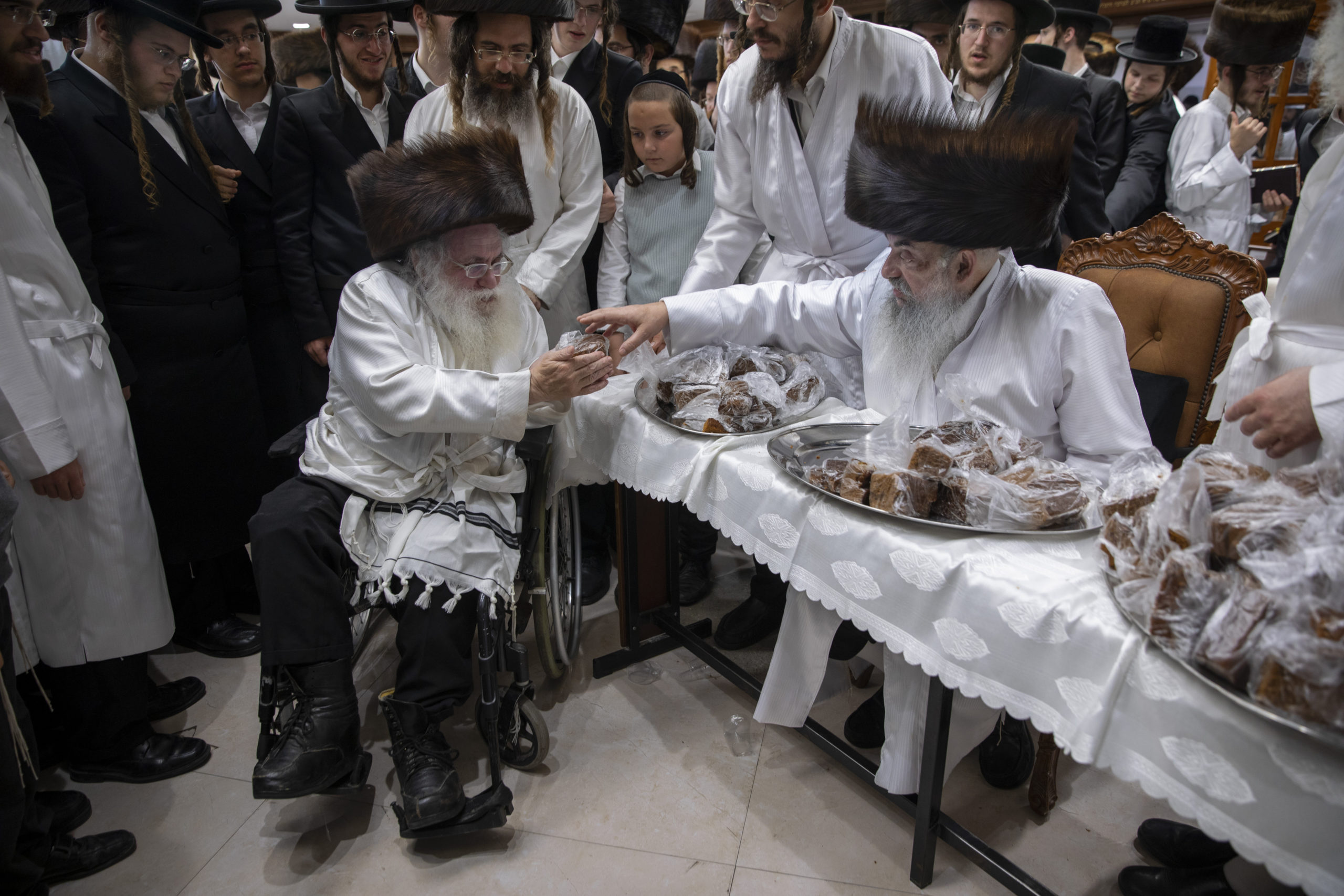

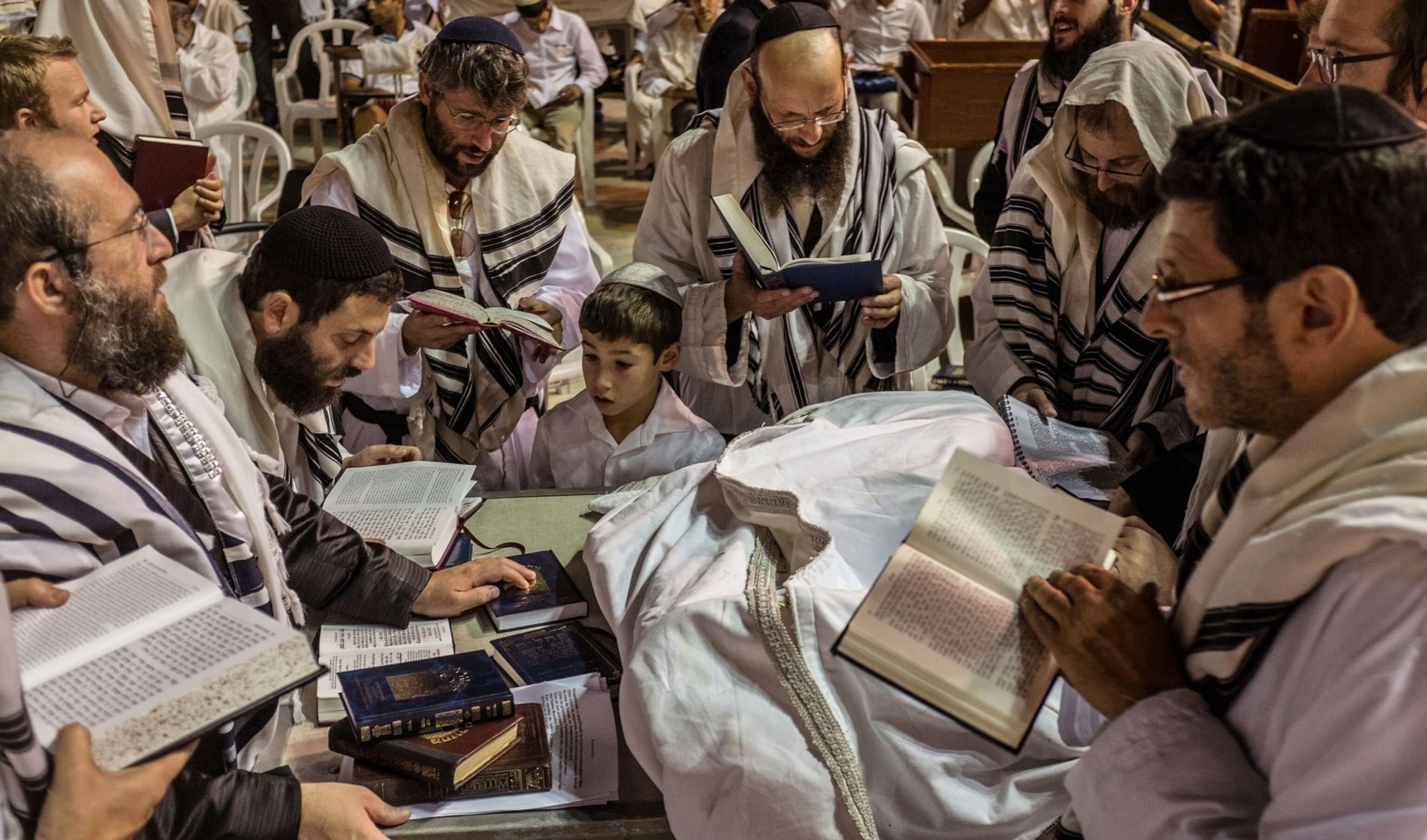
Sukkot
Sukkot (スコット)is an 8-day period (7 days in Israel) during which people build an outdoor shelter and then sleep and eat all of their meals in that shelter (weather allowing). The holiday represents one of the three annual pilgrimage festivals when Jews were traditionally expected to travel to the Holy Temple in Jerusalem: staying in outdoor temporary shelters represents the travel period. Sukkot is called both the “Festival of Ingathering” (Harvest Festival, representing the time of the year) and the “Festival of Booths” (representing the time of travel). Any religious practices that arise during the period, such as lighting Sabbath candles or welcoming guests at the birth of a new son, are completed in the outdoor shelter as well.
Sukkot can take many forms, as long as there are not 4 solid walls, the structure is temporary, and there is a space for eating and resting.
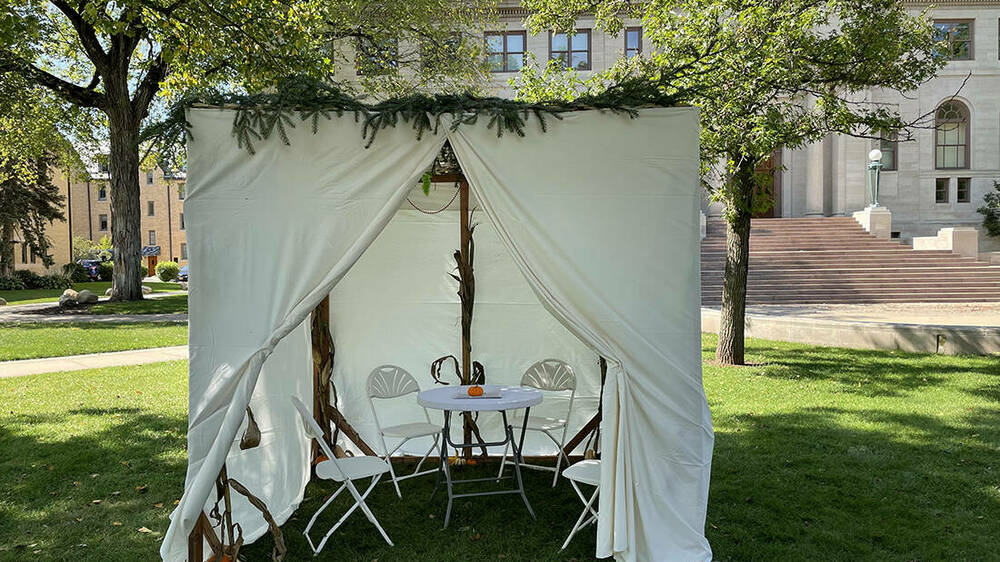




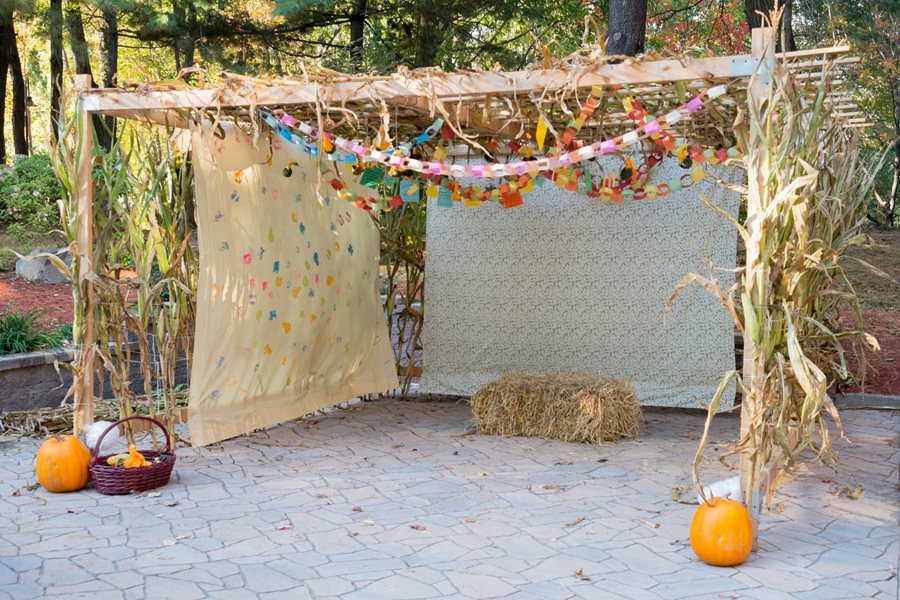
As with many religious practices of the Abrahamic faiths, only men are required to follow certain practices, but most families participate together. The first and last days of the festival, plus the second day when outside of Israel, are Shabbat-like holidays when work is forbidden. In between those days, certain work is permitted, such as all activities that are needed for the holiday—buying and preparing food, cleaning the house in honor of the holiday, or traveling to visit other people’s sukkot or on family outings. All of these are permitted by Jewish law. Labor-intensive activities, such as laundering, mending clothes, or engaging in physical labor, are not permitted. (Non-preventable medical situations, such as childbirth or emergency medical treatment, are allowed.)
There are extra religious services during the festival period, and regular times of worship include extra prayers and practices, such as Mussaf, Hallel, and Hoshanot. One of the iconic symbols of Sukkot is the “4 Holy Species” bundle – lulav (ルラヴ、or palm frond), hadass (ハダス、or myrtle), aravah (アラヴァ、or willow branch), and etrog (エツローグ、or citron). On each day of the festival, worshippers walk around the synagogue carrying the Four Species while reciting special prayers known as Hoshanot. (The lulav and etrog are not used on the Sabbath.) In addition, these plants are hung in the outdoor shelters as decorations.
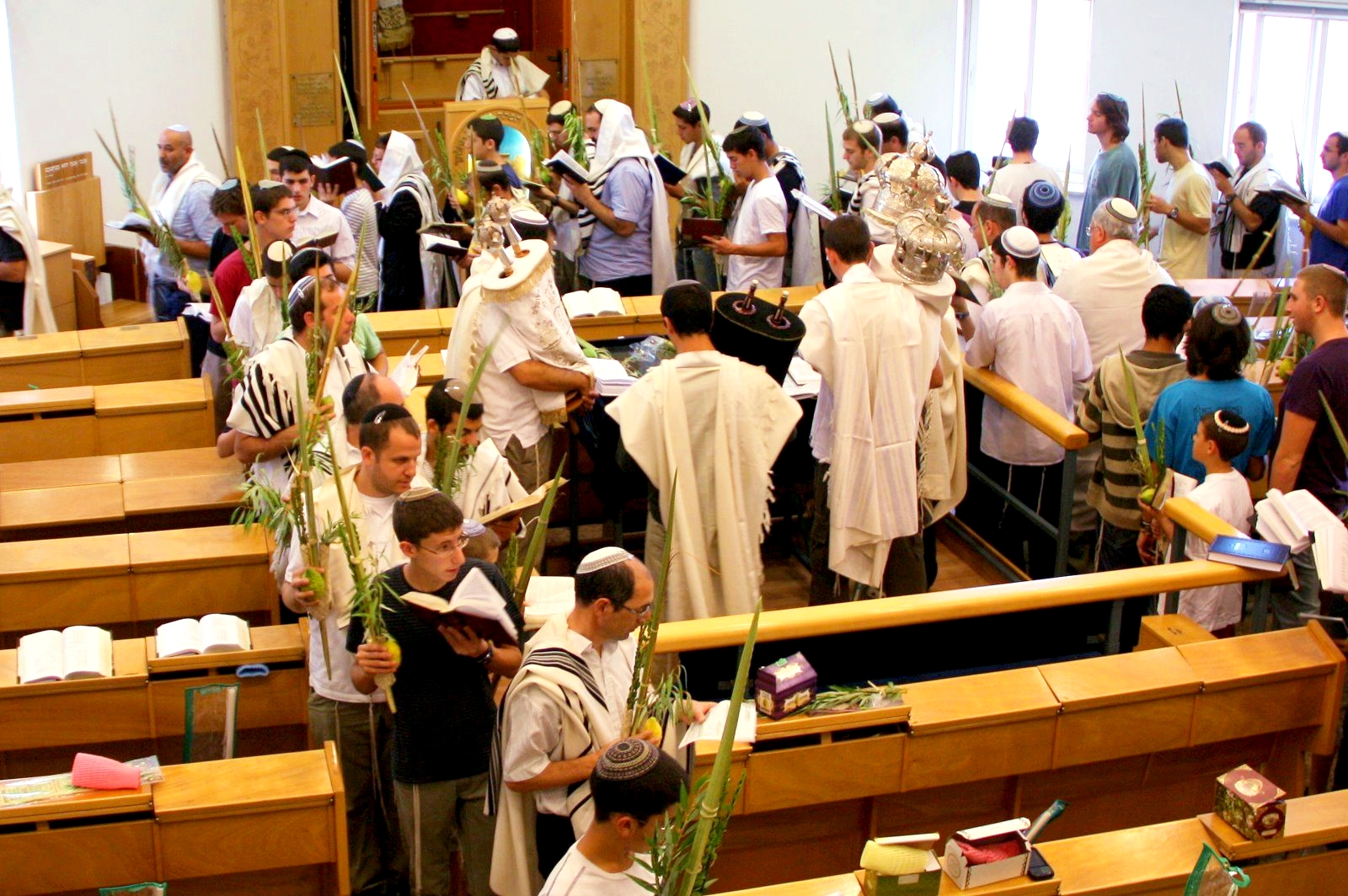
Hoshana Rabbah
Hoshana Rabbah (ホシャナラッバ)is the seventh day of Sukkot and the Day of Great Supplication. Although the day of judgment is considered to pass on Yom Kippur, it is considered to be delivered on Hoshana Rabbah, and people may be able to appeal their verdict until that time. On Hoshana Rabbah, people bring their lulav (palm fronds) and etrov (citron) and make seven circuits around the synagogue while reciting prayers.
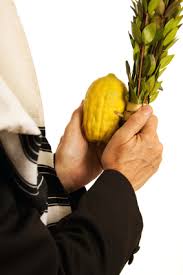
Shemini Atzeret
Shemini Atzeret (シェミニ・アツェレト)is the “Eighth Day of Assembly”. It is usually viewed as separate from Sukkot, but is sometimes celebrated on the last day of Sukkot. It is the day when people leave their sukkah and return to eat meals in their house.
Simchat Torah
Simchat Torah (シマハットラー)(“Joy of the Torah”) is a holiday in which people stay up all night reading the Torah (Jewish scriptures). In Israel, this tradition is celebrated on the same day as Shemini Atzeret; outside of Israel, it is often the following day.
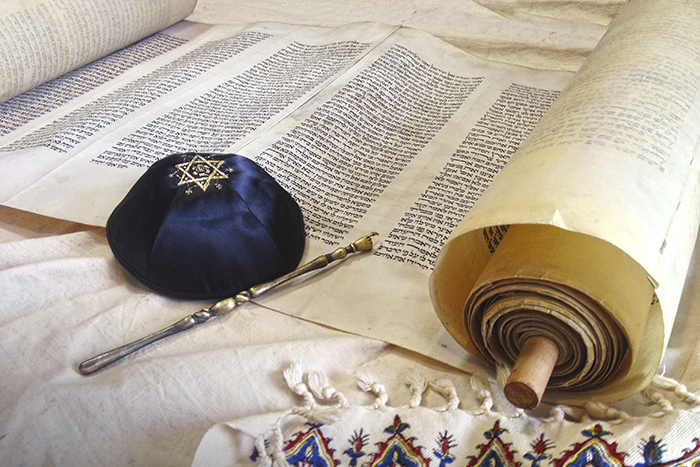
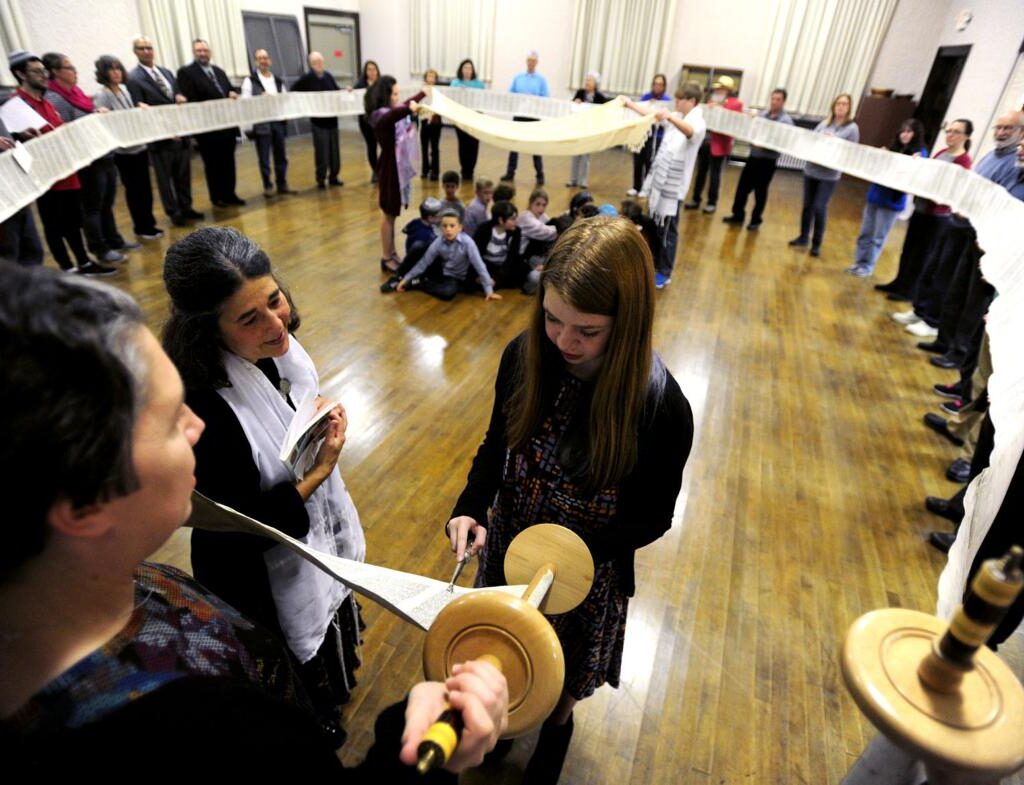
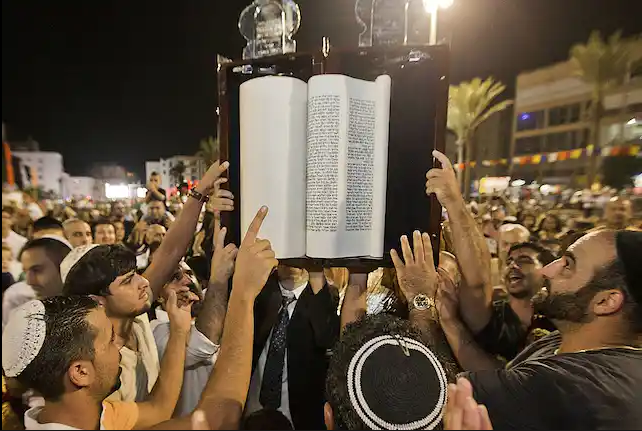
More at: https://www.timeanddate.com/holidays/jewish/simchat-torah